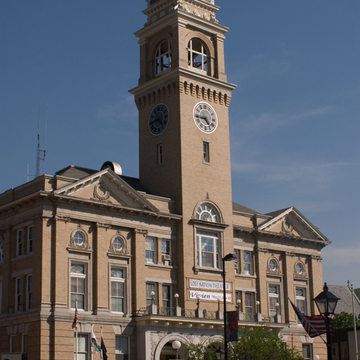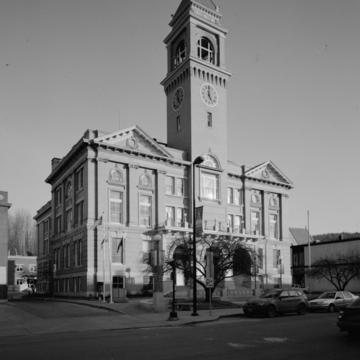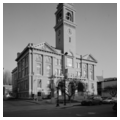While a dome marks the state government in Montpelier, a campanile marks the municipal government. Long languishing in rental space in a city physically dominated by the state, local officials wanted a powerful visual symbol of their own. As in many municipalities at the start of the twentieth century, they embraced the City Beautiful movement. In 1906 a building committee was appointed and an open-air market site in the center of the commercial district was acquired. George G. Adams of Lawrence, Massachusetts, architect of Barre City Hall and Opera House (WA41), designed the Italian Renaissance Revival building in yellow brick with granite trim. A rusticated first floor with a central triple-arched entrance carries twin pedimented pavilions that flank a tall central Italian clock tower with corbels and arcaded belfry. Set back from the building line to permit a touch of green landscaping in accord with City Beautiful tenets, the hall was rushed to completion in order to forestall the transfer of the governor's ball of 1911 to Burlington. An impressively grand gesture of civic pride, it belies the small scale of the community that built it.
You are here
Montpelier City Hall
If SAH Archipedia has been useful to you, please consider supporting it.
SAH Archipedia tells the story of the United States through its buildings, landscapes, and cities. This freely available resource empowers the public with authoritative knowledge that deepens their understanding and appreciation of the built environment. But the Society of Architectural Historians, which created SAH Archipedia with University of Virginia Press, needs your support to maintain the high-caliber research, writing, photography, cartography, editing, design, and programming that make SAH Archipedia a trusted online resource available to all who value the history of place, heritage tourism, and learning.


















